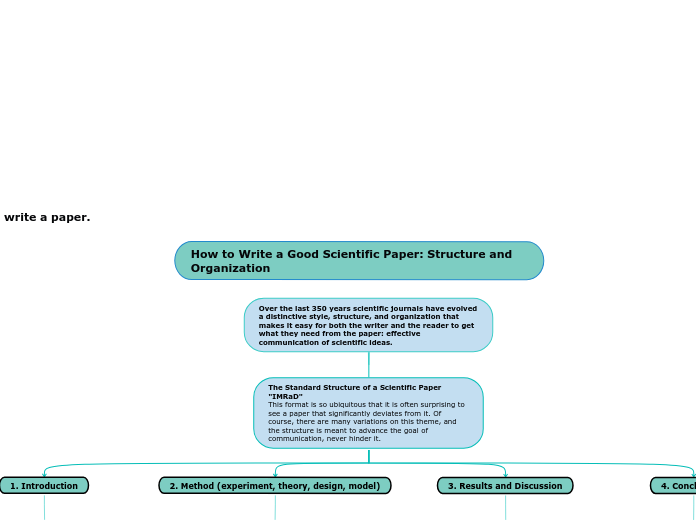How to Write a Good Scientific Paper: Structure and Organization
Over the last 350 years scientific journals have evolved a distinctive style, structure, and organization that makes it easy for both the writer and the reader to get what they need from the paper: effective communication of scientific ideas.
The Standard Structure of a Scientific Paper "IMRaD"
This format is so ubiquitous that it is often surprising to see a paper that significantly deviates from it. Of course, there are many variations on this theme, and the structure is meant to advance the goal of communication, never hinder it.
1. Introduction
A paper must meet four criteria before it is publishable in a scientific journal:
The content of the paper must match the scope of the journal.
The quality of the paper (method and execution of the research, as well as the writing) must be sufficiently high.
It must present novel results (with the exception of review papers and the like).
The results must be significant enough to be worth reading about (and thus worth publishing).
2. Method (experiment, theory, design, model)
A “method” is used here more broadly than an experimental method.
The method can include the development of a theory (either as necessary background or as a novel element of the paper).
The establishment of a specific device design, or the development or description of a modeling tool to be used.
Should justify the experimental design as well.
Plans and analysis methods used should be explained.
3. Results and Discussion
Should be very short.
Presented in tables and/or graphs.
The Discussion section mirrors the format of the Introduction.
4. Conclusions
The findings should be emphasized, explaining how the work is significant.
The goal here is to provide the most general claims that can be supported by the evidence.
The Conclusion section should allow for opportunistic reading.
The Conclusion should concisely provide The Conclusion should concisely provide.
